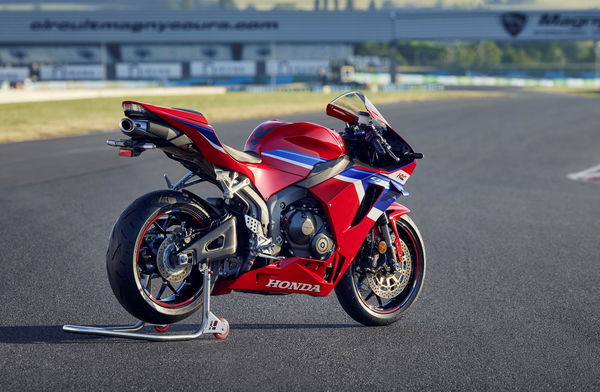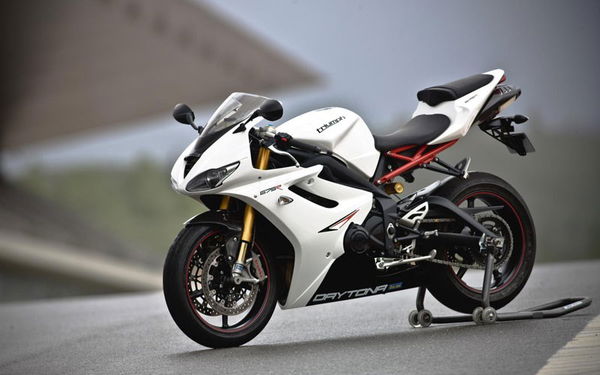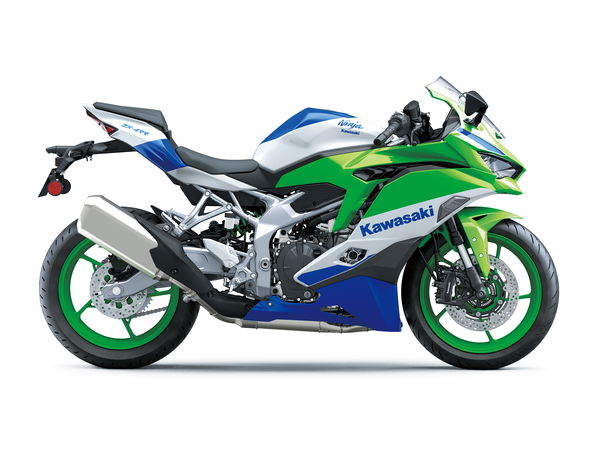Does the 2024 Honda CBR600RR prove supersport bikes are back for good?
Is the supersport 600 class really dead? Judging by Honda's new CBR600RR and other developments in the class, maybe not

One of the biggest surprises among the 2024 motorcycle unveilings at this week’s EICMA in Milan was the new 2024 Honda CBR600RR – a reworked incarnation of the supersport screamer last seen in 2018.
After all, supersport 600s were ‘dead’ right?
The 600cc four-cylinder midi-superbikes class may have peaked between 2007 and 2009 not only with the likes of Honda’s C-ABS equipped RR but also Yamaha’s first ride-by-wire R6, Kawasaki’s first ‘Big Piston Fork’ ZX-6R and Suzuki’s GSX-R, but also Triumph’s then new Daytona 675 triple.
Since then, however, and despite its significance as a race class in both world supersports and the TT, their popularity has fallen off a cliff. The economic crash of 2008 effectively froze development; sales of the expensive, cramped, impractical sportsters nose-dived, BMW canned a much-rumoured ‘S600RR’ project and increasingly tough EU emissions regs, first in 2017 with Euro4 and especially in 2021 with Euro5, were prohibitive to smaller capacity, high revving multis.

All that combined saw the death (in the EU) of the GSX-R, CBR, ZX-6R and Daytona in 2018. Yamaha fought back with an emasculated new R6 but even that bike was consigned to ‘track only’ status from 2022, while Kawasaki responded with a Euro4-friendly ZX-6R between 2019 and 2021.
But the overall net result was that, in 2022 and 2023, and despite a supposedly production-based World Supersport racing class and TT Supersport category, there were actually no road-legal supersport bikes you could buy with racers generally using older or US import machines…
Until now.
Truth is, the death of the SS600 has been somewhat exaggerated. It’s true UK sales aren’t what they were or are likely to be again (and certainly not to their 1990s ‘best-sellers’ levels) but supersports remains a significant ‘marquee’ category, especially for the Japanese.

In major markets unaffected by EU regs, such as the US, many supersports remained on sale. Technology advances have meant that adhering to Euro5 and more has become possible (even though peak outputs are generally down) while the emergence and success of ‘junior’ sportsters such as Kawasaki’s Ninja 400, Yamaha’s R7, Aprilia RS660 and more suggests there is still a latent interest in middleweight sportsters – so why not some high end, ‘flagship’, four-cylinder ones?
This is all backed up by the fact that Honda is not alone. Kawasaki announced a new, updated, 127bhp Euro5-compliant ZX-6R in June and reinforced that with a new, four-cylinder ZX-4RR in August. Aprilia has announced its new RS457, although admittedly, that’s a more A2-targetted twin, while Chinese up-and-comer CFMoto has shown prototype versions of an equally all-new, four-cylinder 500SR sportster while also cooking up a new, fully faired 675cc machine in the form of the 675SR.
In light of all that, maybe it should be no wonder that Honda, as it so often does, wants to be seen as ‘top dog’ in the sector, almost irrespective of sales.

And as to whether the new CBR600RR WILL actually sell is probably down to two things: In terms of tech and spec it looks to be a winner; it has class-leading electronics, TFT dash, MotoGP-inspired winglets and even an optional HRC race kit, enough, we’re sure, to see it on the top step in WSS or Douglas sometime soon.
In terms of price, that may be a little trickier. Honda has yet to announce the new CBR’s ticket but if it’s anywhere near as low as the new ZX-6R’s £10,599 it’ll be a sure-fire winner, and even if it’s not it’ll stand out as the most exotic street supersports in its class with the likes of Yamaha surely tempted to follow suit.
Welcome back CBR600RR. You’ve been missed…
Check out our 2024 Honda CBR600RR review here.












